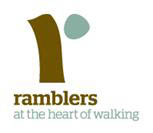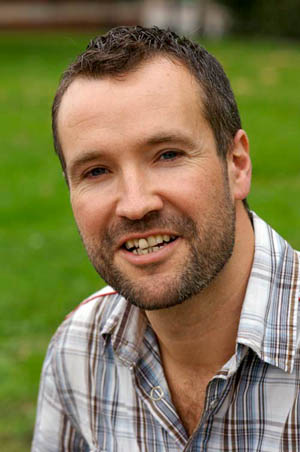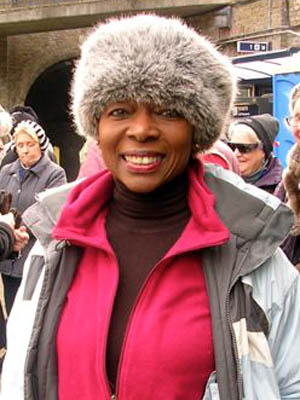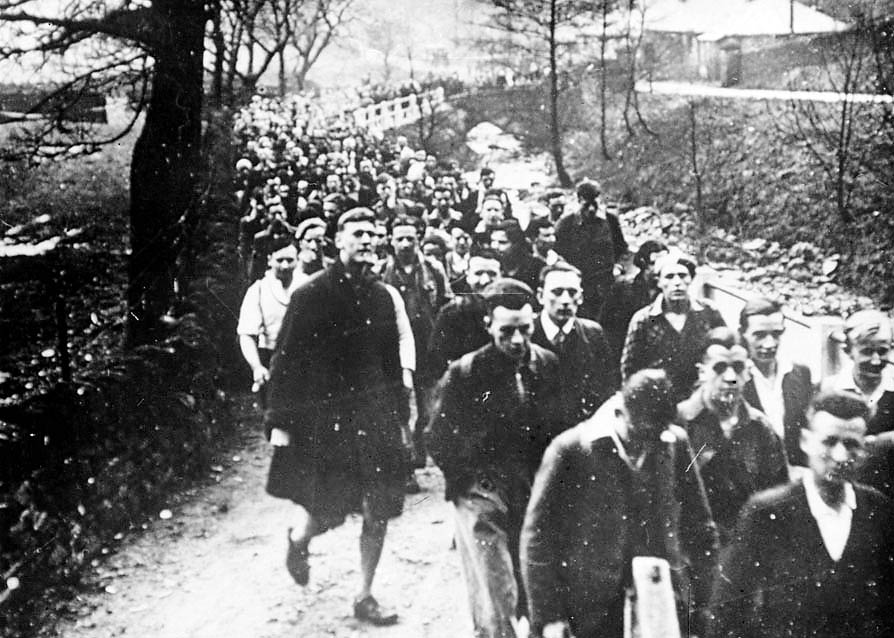
Booted out: the old Ramblers' image has been rebranded
For decades, the name has conjured up an image, rightly or wrongly, of the breeches-clad hiker, complete with bobble-hat and canvas knapsack striding across the moors whistling a Ewan MacColl tune.
With a 74-year history steeped in the struggles of working-class northern factory-hands to escape the weekday drudge and walk the grouse estates of the Peak District, the Ramblers’ Association has decided to drag its image into the 21st century with that most modern phenomenon – a rebrand.
Gone is the Association; consigned to the wind is the apostrophe. Behold: The Ramblers.
The charity has been instrumental in many changes to countryside leisure we now take for granted. It persuaded the Ordnance Survey to include rights of way on its maps; it was one of the prime movers in the setting up of national parks in Britain; and, of course, it was one of the strongest advocates of the right to roam, which culminated in the Countryside and Rights of Way Act in England and Wales and the Land Reform (Scotland) Act.
In fact the Ramblers in Scotland have been ahead of colleagues south of the border in many ways. Not only did Scotland end up with one of the best access-to-countryside laws in Europe, it lost its apostrophe years ago. The organisation has, for a long time, been known as Ramblers Scotland.
So why the need for a change, now? The 140,000-strong organisation’s membership is altering, it says. There are more under 40s; more people are undertaking urban walking and there is a growth of ‘themed’ walks, such as films strolls and love hikes.

The new Ramblers' logo
So the rolling green hills have been put out to pasture and replaced by a stylised lower-case ‘r’ and the tagline: ‘ramblers at the heart of walking’.
There is also to be a move towards making walking accessible to all abilities and backgrounds, a broadening of the movement towards persuading more people to give up their couch-potato life and get on their feet. The Get Walking Keep Walking campaign aims to get 90,000 inner-city dwellers more active.
In Scotland, the Walk the Path to 2014 has a similar goal, with the Glasgow Commonwealth Games a spur to improving the health of the nation by striding out.
Tom Franklin, Ramblers’ chief executive, said: “We want an image that reflects the breadth and scale of our work.

Tom Franklin, chief executive
“More of us live in urban communities, so we have varied our walks to include short, easy walks in towns and cities for groups and individuals. Stress is a big part of people’s lives these days and they need exercise to be easy, convenient and cheap, especially during the recession.
“Get Walking Keep Walking is making a real difference to people’s lives. One participant, who experiences agoraphobia, is now hopeful of getting a job thanks to a new sense of confidence. I’m also sure that our rebrand will give us a renewed sense of confidence to make walking an activity for the masses again.
“Walking was a way of life when we started up 74 years ago. It needs to be even more so now.”
The Ramblers’ president Floella Benjamin said: “Walking is one of the greenest, cheapest, healthiest and most pleasurable activities you can do and I love it.
“The Ramblers is Britain’s walking charity and welcomes all, both young and old, so this fresh, vibrant and accessible new branding reflects this. It sends out a very clear message that everyone is a walker and can enjoy walking no matter who they are, what their ability is, or where they walk – be it town or country.
“The Ramblers are taking a fundamental step towards putting walking as a means of transport, exercise, leisure and pleasure at the heart of people’s lives, at a time when it is very much needed.”
Dave Morris, Ramblers Scotland director, stresses the organisation still encompasses its traditional membership. He said: “Our new image emphasises that we are working for walkers from the centre of the city to the top of a remote mountain.
“We need to galvanise the whole population, from the politicians sitting in Holyrood to the youngsters peering at their computers.
“We want as many as possible to get up and take a walk in the fresh air. It’s the best way to keep fit and deal with all the stresses which come our way, day by day.”

President Floella Benjamin
The Ramblers’ rebranding is clearly aimed at capitalising on the growing popularity of stay-at-home holidays and the need to tackle growing obesity.
You can check out the rebranded Ramblers at their new-look website.
Whereas it was natural for young urban dwellers to escape to the countryside 70 years ago, there is a demand for walking activities on their doorstep as, paradoxically; leisure time seems to be in shorter supply now than at the height of Britain’s industrialisation.
It may be that the Ramblers comes to be seen as catering as much for that as for the hardcore distance walkers traditionally seen as its epitome. The British Mountaineering Council already represents hillwalkers and mountaineers but the old Ramblers’ Association was often seen as more politically active and campaigning.
Its roots lie in the polluted cities of Victorian Britain, when a growing number turned to countryside walking to escape the filth and drudgery of 19th century life.
Two of the earliest known campaigning groups were the Association for the Protection of Ancient Footpaths in the Vicinity of York, formed in 1824, and the Manchester Association for the Preservation of Ancient Footpaths which came into existence two years later.
Rambling clubs started across Britain. The West of Scotland Ramblers’ Alliance was the first clubs’ federation, formed in 1892.
London was, for a time, the hub of rambling clubs, with Sunday Tramps, the Forest Ramblers Club and the Polytechnic Rambling Club all forming in the latter half of the 19th century.
The Federation of Rambling Clubs formed in 1905 to push for rights of way and to persuade railway companies to offer cheap fares to enable walkers to get out into the countryside. Further federations grew in northern English cities such as Manchester, Liverpool, and Sheffield.

Ramblers set out from Bowden Bridge for the Kinder Scout mass trespass
By the early 1930s, a need for a national body was apparent and a Peak District meeting in 1931 was to lead to the formation of the National Council of Ramblers’ Federations. A year later, the Kinder Scout mass trespass was to prove a seminal point in the movement but was opposed by the national council.
By 1935, the council decided on a change of name and the Ramblers’ Association was officially born.
Following the Second World War, the movement grew and by 1949, legislation allowing the setting up of national parks was introduced. The first was in the Peak District, site of the battle between the Duke of Devonshire’s gamekeepers and the young ramblers from Manchester.
The clamour for improved walking increased and the Ramblers’ first full-time secretary Tom Stephenson mooted the idea of a long-distance path along the spine of England. In 1965, 30 years after Stephenson first suggested it, the Pennine Way was opened, Britain’s first national trail.
The Association continued its pressure for improved rights for walkers, with the strengthening of national park powers and further duties for highway authorities to signpost rights of way.
Ramblers Scotland came into being in 1967, with Ramblers Wales following seven years later.
The biggest triumphs for years for the Ramblers were the introductions of the increased rights to roam in Britain.
Now, it seems the Ramblers are out to dispel the image of sweaters and breeches and embrace Lycra and softshell. Would Benny Rothman, jailed for his part in the Kinder mass trespass, approve? I have a sneaking suspicion he might. He was anything but an elitist and it could be argued the old Ramblers’ Association had taken on the middle-class haughtiness that saw its predecessors distance themselves from the young hotheads’ actions that April afternoon in 1932.
Who’s for a drum-and-bass version of The Manchester Rambler?
The Piglit
02 March 2009Change of image? The CEO has got a beard and a checked shirt and the president has a red anorak and a daft hat!